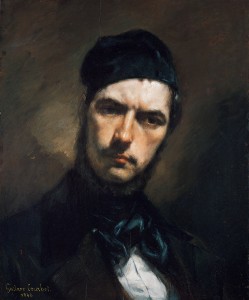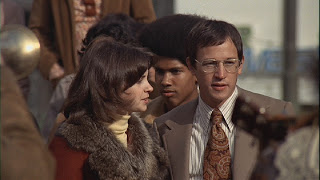The whole reason the feudal stacks of the Network have been tracking everything that you do is to pigeonhole your taste. If the machine knows your taste it can create a virtual simulation of your taste and then quickly scan everything available for purchase and pre-stock your shopping cart with the kind of things a person like you would like.
Things were going along swimmingly with this business model until the personal data stacks learned an uncomfortable fact. Lots of people who have money don't actually have any taste. They're not sure what they like. If you take all the personal data they've spewed across the Network it doesn't add up to any kind of coherent taste. Turns out in many cases the consumer needs to be sold on a kind of taste before they can be sold an end product. The tastelessness of the masses results in a lower return on investment.
As a nation of individuals, we are bred to believe that an array of products can be tailored to match our unique taste. The products that gather beneath our freak flag will much different than someone else's. All we require is the capital to cause the presents to materialize beneath the tree. With the millions of products circling round us, we need a refined sense of taste such that as many consumables as possible can be packed on to our taste buds.
If we can't develop a taste on our own, we'll need to purchase a few from a pre-packaged selection. Tastes accessorized with shelves up to the moon with a spot for everything and every thing needing a spot. Taste, you see, must be optimized. Simple tastes are fine for the unsophisticated, but they leave one at such a disadvantage in the age of technology.
Once you've purchased your taste the whole world comes into focus. Faced with a shelf full of soft drinks in the supermarket, you have clarity on whether Coke or Pepsi is the real thing. It's helpful if you've got your Google Glass affixed to your face so you can receive real-time updates on the state of your taste.
For the most part there's no need to keep the fruit of your taste on physical media cluttering up your house. That's what the cloud is for, your stuff is just a click away. Your taste is already conveniently stored in the cloud–think of it as a custom set of shelves made to fit your stuff perfectly. As long as you can afford to keep the engines stoked, the hunger pangs of your taste can be satiated. And you can rest assured you've invested in the optimal configuration for consumption.
As you watch the wheel of your desire spin faster and faster, it's natural to feel a little superfluous. You wonder if you stepped away would things continue whirring away. The desiring machine only requires fuel, with sufficient capital you could keep any number of plates in the air. Flipping channels from this set of pre-packaged tastes to the next.
Your Network profile shows off the set of tastes you've acquired. It tells the world that you're the kind of person who likes this stuff and not that stuff. You've optimized the filters to let in the good tasting stuff and spit out the disgusting stuff. In the higher realms of your taste you travel via negativa, here you simply separate yourself and point a finger at things that represent bad taste.
The Network stacks have a stake in binding your profile to the “real” you. If they can get it to stick, then they've got you. The binding agent is made stronger by the number of ties across a diverse set of relations. If they can erase the trace of the glue then it's a short distance to the idea that there's no outside. As in “there's no outside of Google.”
But there's always a gap. You look at the set of digitally encoded tastes you've posted to represent your world view and you can't help but notice it's not you. When people admire the profile, you identify with it. When they revile it, you distance yourself, talk about its inaccuracy. If you were to walk away today, you could create a whole new profile that might look like an entirely different person.
Comments closed








